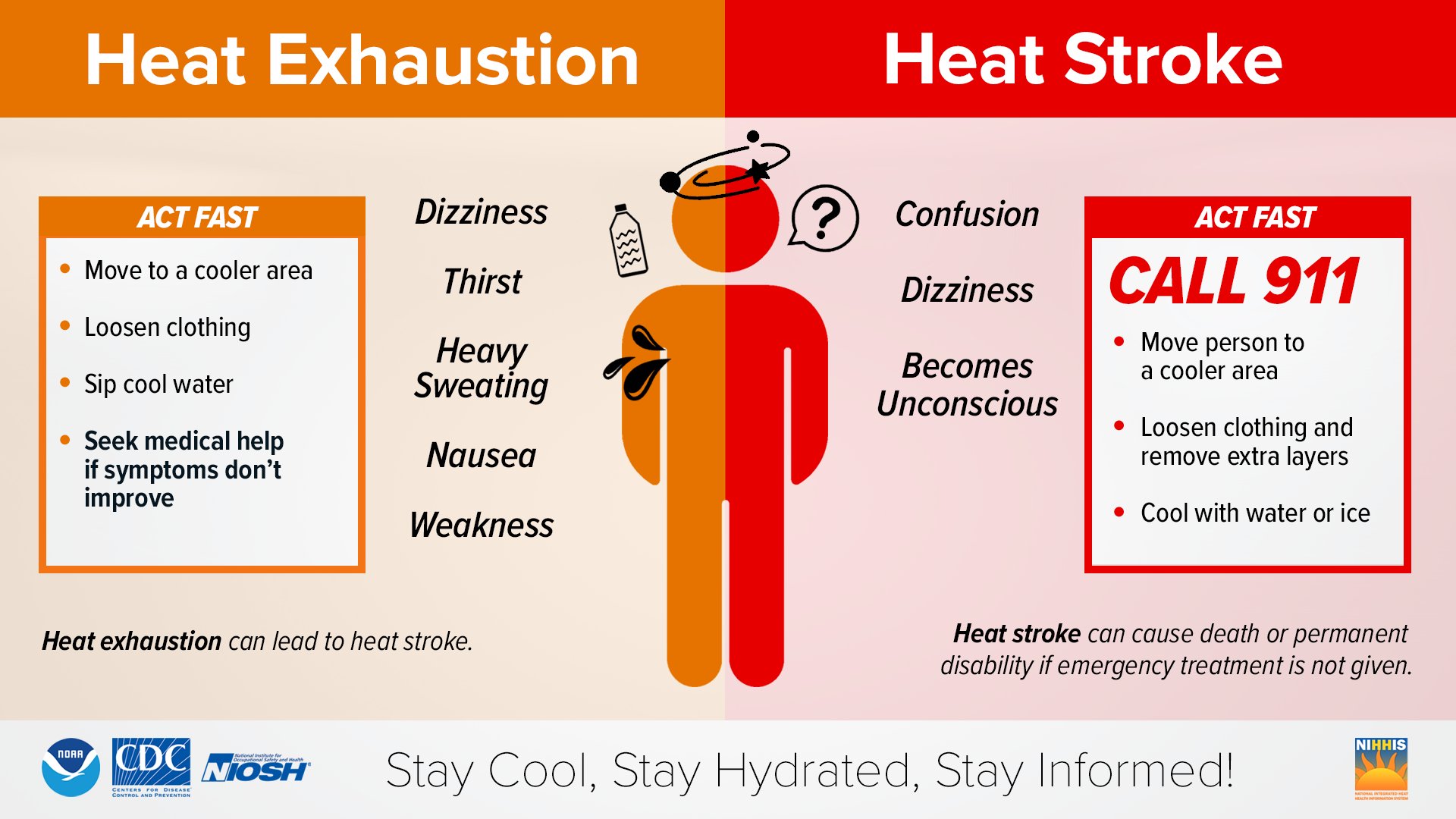Florida’s Division of Emergency Management has issued serious warnings that affect visitors at the Walt Disney World Resort in Central Florida.

Unless you’ve been vacationing somewhere in the Arctic Circle, you’ve likely heard about the heat wave gripping the southern United States. Temperatures have been soaring across Texas, Oklahoma, and Louisiana, and the sweltering heat is expanding as far as the states of Arkansas, Missouri, Mississippi, and Florida over the past few days. But this is no ordinary heat wave (if there even is such a thing). The excessive heat that’s holding residents and visitors in the southern U. S. states hostage in recent days is due to a massive “heat dome” that seems to have firmly planted itself in the skies above.
A “heat dome” is a weather phenomenon that occurs “when the atmosphere traps hot ocean air like a lid or cap,” according to the National Oceanic & Atmospheric Administration (NOAA). As part of this phenomenon, “high-pressure circulation in the atmosphere acts like a dome or cap, trapping heat at the surface and favoring the formation of a heat wave.”

Texas State Climatologist John Nielsen-Gammon explains that a heat dome occurs when “stationary high pressure with warm air combines with warmer than usual air in the Gulf of Mexico and heat from the sun that is nearly directly overhead.” In layman’s terms, it’s hot. It’s scorching. It’s unbelievably, unnecessarily hot, and according to weather experts, temperatures may continue to soar.
This week, the city of Dallas, Texas, won the #1 spot on the list of hottest cities in the country, an accolade with which even Texans aren’t completely familiar. So what does this have to do with Florida and those who are visiting the Walt Disney World Resort?
The Texas heat wave has been expanding, and Florida is currently feeling the heat from the heat dome effect that initially began in the Lone Star State, and the reasons behind the expanding heat are probably two-fold: first, many Texans are friendly, and we don’t mind sharing with everyone so it makes sense to share the heat with our friends in Florida, and second, the very nature of heat domes and heat waves causes them to expand, meaning that the area under the heat dome often grows in size, encompassing nearby states–and some states hundreds of miles away.
According to The New York Times, more than 62 million Americans live in areas of the country that are expected to experience dangerously high heat levels this week. That’s nearly 20% of the population of the contiguous United States. The map below shows areas with dangerously high heat indices. Areas in dark orange are expected to see a heat index of between 103 and 125 degrees Fahrenheit.

When it’s hot outside, the risk of heat exhaustion and heat stroke increase, and symptoms of both can pop up quickly and with little warning. Overexposure to extremely high temperatures can have devastating consequences for people of every age.
As such, Florida’s Division of Emergency Management has issued warnings to residents and visitors in Florida.
“As Florida experiences heat waves and high temperatures, residents and visitors are encouraged to stay hydrated and cool to avoid heat-related illnesses,” the Division of Emergency Management tweeted on Wednesday.
☀️ As Florida experiences heat waves & high temperatures, residents & visitors are encouraged to stay hydrated & cool to avoid heat-related illnesses.
⬇️ Know the differences between heat exhaustion & heat stroke & learn more about heat safety: https://t.co/iMt7ktUAmU pic.twitter.com/cJJirIC9Uw
— FL Division of Emergency Management (@FLSERT) June 27, 2023
The National Weather Service located in Melbourne, Florida, echoed that sentiment, warning people that staying hydrated and taking breaks to cool off are imperative.
Both entities shared information about heat exhaustion and heat stroke with the graphic below, which gives information about the symptoms for both.

If you’ll be outside in the heat for any length of time, it’s important to stay hydrated by drinking plenty of water and avoiding alcohol. It’s also important to use sunscreen with a sun protection factor (SPF) of at least 30 and to take frequent breaks in the shade or in the air conditioning. This is especially important for Guests visiting the Walt Disney World Resort, as symptoms of heat exhaustion and stroke can be more difficult to identify when Guests are focused on rides, attractions, and experiences.
